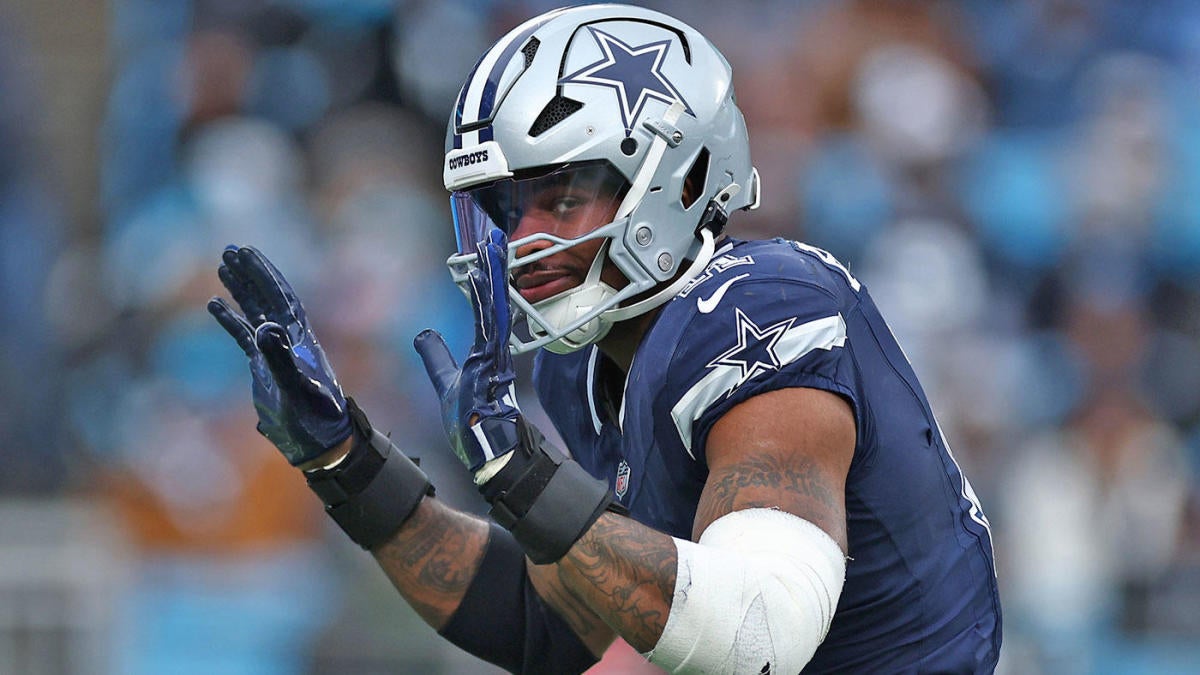Decoding the Micah Parsons Contract Negotiations: A Strategic Balancing Act
The ongoing contract discussions surrounding Dallas Cowboys linebacker Micah Parsons reveal much more than just figures on a paycheck. They illustrate a complex interplay of talent valuation, salary cap maneuvers, mentorship, and organizational culture that could redefine the franchise’s trajectory. By examining the nuances through the lens of key players and recent precedents, this analysis unveils the broader implications of Parsons’ impending deal and what it means for the Cowboys’ future.
The Dak Prescott Paradigm: Patience Meets Precision
Micah Parsons’ contract talks are heavily influenced by the blueprint laid down by quarterback Dak Prescott. Prescott’s four-year, $240 million contract stands as a testament to methodical negotiation, well-timed patience, and leveraging peak performance to command market value. More than just a financial road map, Prescott offers Parsons valuable insight into the psychological demands of such negotiations—emphasizing perseverance, self-belief, and balancing the business side with emotional resilience.
This mentorship shapes Parsons’ approach not just in dollar terms but in mindset, underscoring how contract talks extend beyond monetary concerns to become a measure of personal and professional growth. Prescott’s public confidence in Parsons securing his deal underlines a culture within the Cowboys that fosters internal development and loyalty, reinforcing the notion that these negotiations are as much about trust and respect as they are about numbers.
The Osa Odighizuwa Extension: Financial Ambition Meets Cap Constraints
The recent four-year, $80 million extension for defensive tackle Osa Odighizuwa with $58 million guaranteed injects new complexity into the Cowboys’ financial management. Odighizuwa’s deal signals the organization’s commitment to locking in defensive talent but simultaneously shrinks the available salary cap space, forcing management into intricate financial gymnastics.
This development highlights the Cowboys’ strategy of investing heavily in core players while juggling the cap implications. Managing multiple high-value contracts concurrently—like those of Prescott, CeeDee Lamb, and now Odighizuwa—requires precision and creativity. Techniques such as contract restructuring, bonus allocation, and incentive calibration become essential tools to maintain competitive depth and flexibility while honoring lucrative commitments.
From Silent Hurdles to Active Discussions: The Evolution of Parsons’ Negotiations
Initial quiet around Parsons’ contract discussions has given way to more open conversations—a tactical progression mirroring past franchise negotiations. This shift suggests a strategic, phased approach designed to maximize benefits for both the player and the team.
Parsons is positioned as a foundational figure in the Cowboys’ long-term vision, and his contract will be crafted to reflect his All-Pro caliber impact. The timing and negotiation framework also accommodate performance incentives and guarantees that balance security for Parsons with the team’s financial realities. Guidance from experienced teammates and franchise protocols equip Parsons to navigate these talks effectively within a well-structured organizational rhythm.
Beyond Numbers: The Psychological and Cultural Dimensions
Contract negotiations, particularly at Parsons’ level, are steeped in emotional and cultural undercurrents. The process demands mutual respect and shared confidence, elements that resonate deeply within the Cowboys’ locker room.
Prescott’s acknowledgment of Parsons’ moment without overshadowing him speaks to a team culture rooted in mentorship and unity. Odighizuwa’s public endorsement of Parsons’ value further reflects a collective recognition of Parsons as a franchise cornerstone. Such alignment can serve as a powerful negotiating asset—signaling to management that Parsons’ retention is integral not only financially but also culturally.
Navigating the Salary Cap Maze: Strategic Imperatives Ahead
The convergence of major contracts for Prescott, Lamb, Odighizuwa, and Parsons presents a formidable salary cap challenge. The Cowboys’ front office faces a delicate balancing act: crafting deals that reward elite talent while preserving roster competition and depth.
Successful management will likely involve a mix of contract restructuring, smart bonus deployment, and incentive optimization. These measures must be carefully calibrated to avoid hamstringing future flexibility, especially given the evolving landscape of player valuations and competitive pressures.
The Parsons contract negotiations, therefore, act as a test of the Cowboys’ financial agility and strategic foresight—setting a precedent for how they will handle future stars amid cap constraints.
A Future Shaped by Negotiation Mastery
Micah Parsons’ contract saga encapsulates the intersection of elite talent management, financial strategy, and team philosophy. Leveraging Dak Prescott’s experienced guidance and mindful of Odighizuwa’s recent extension, Parsons and the Cowboys advance toward a deal that will define the franchise’s identity and competitive posture.
This negotiation is more than a business transaction; it is a defining moment that will influence team dynamics, salary cap health, and the ability to build a contender around a constellation of star players. The outcome promises to leave a lasting imprint on the Cowboys’ landscape, illustrating the art and necessity of strategic patience and creativity in modern NFL contract management.

